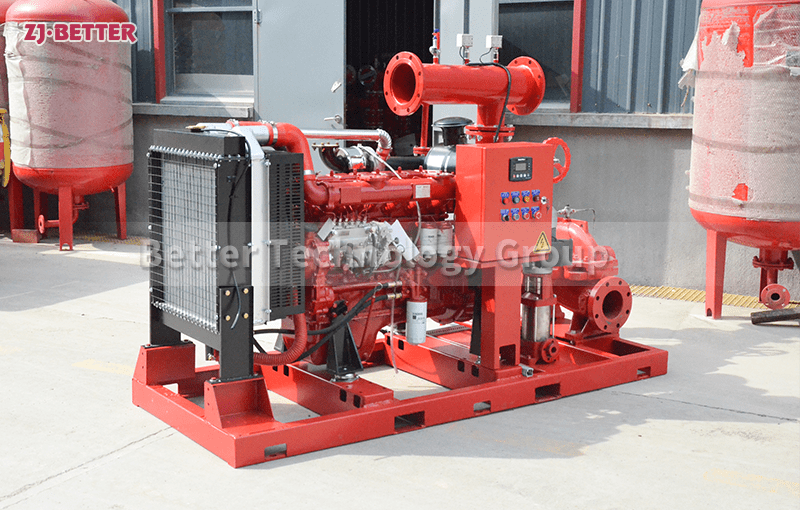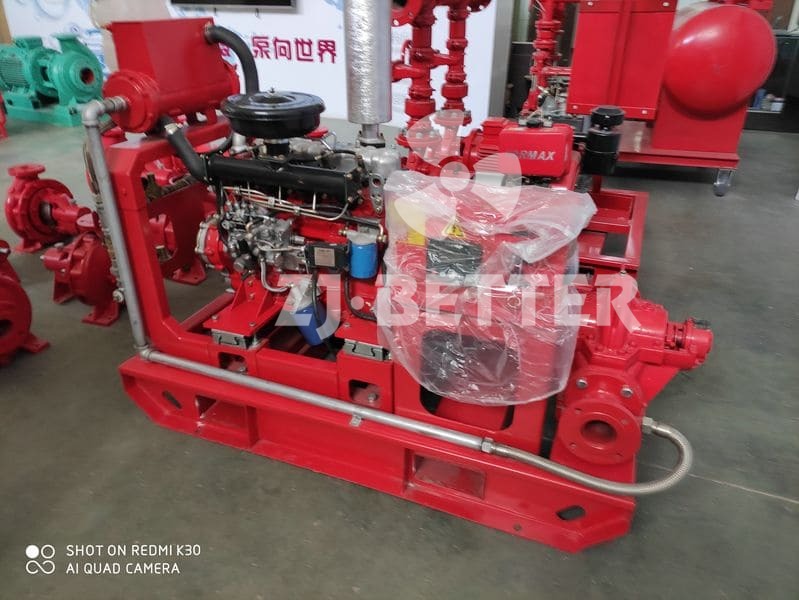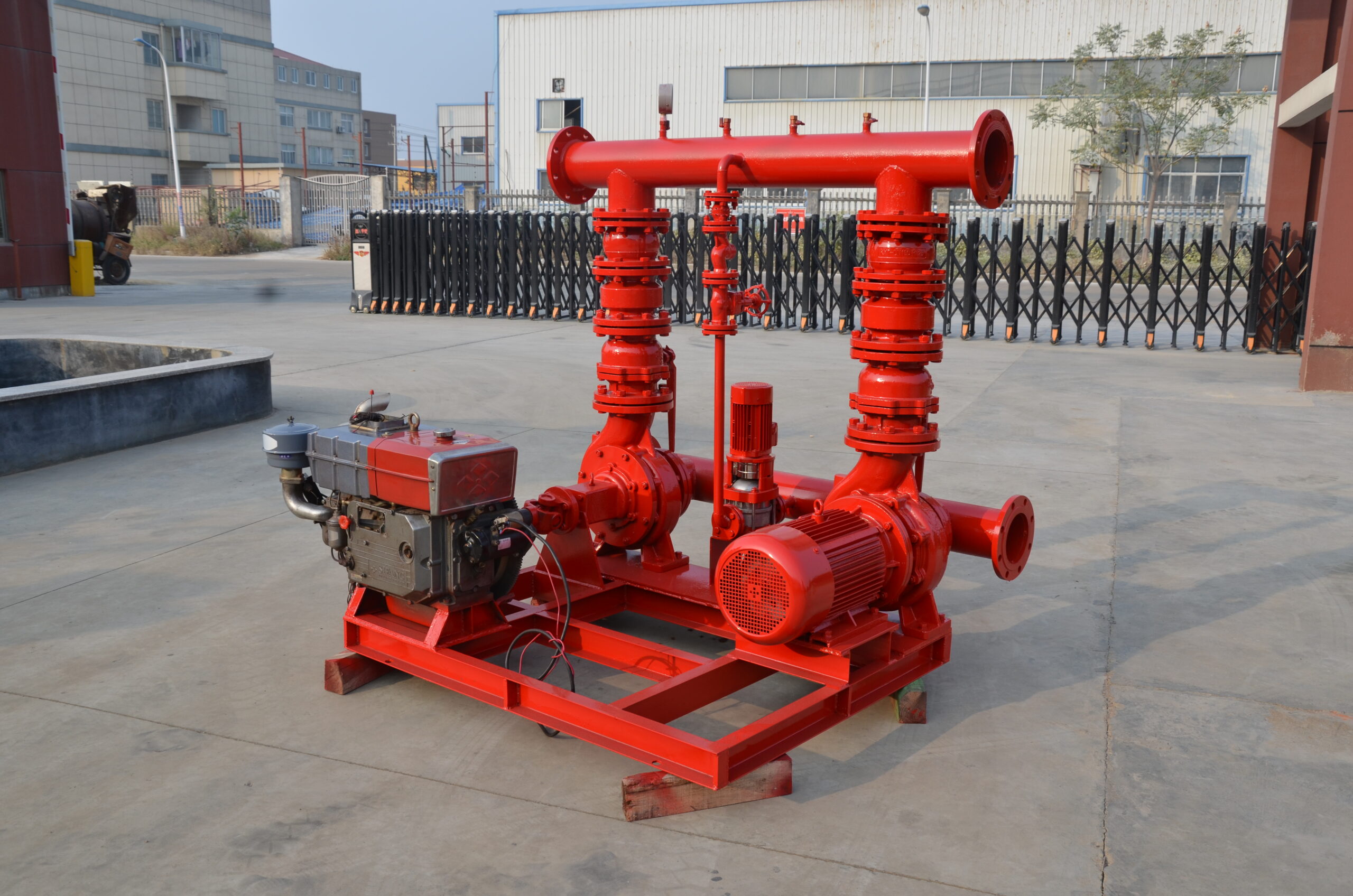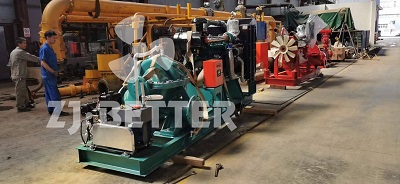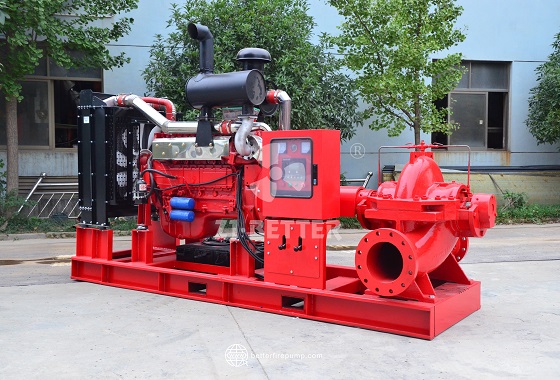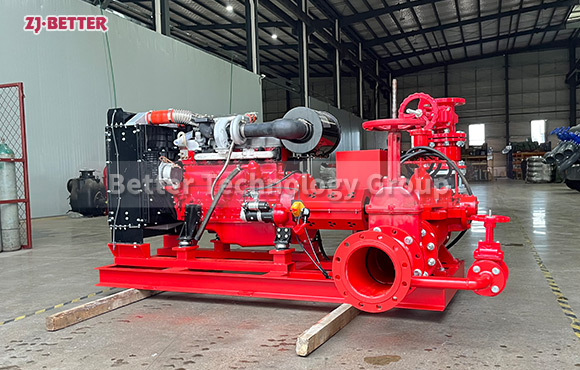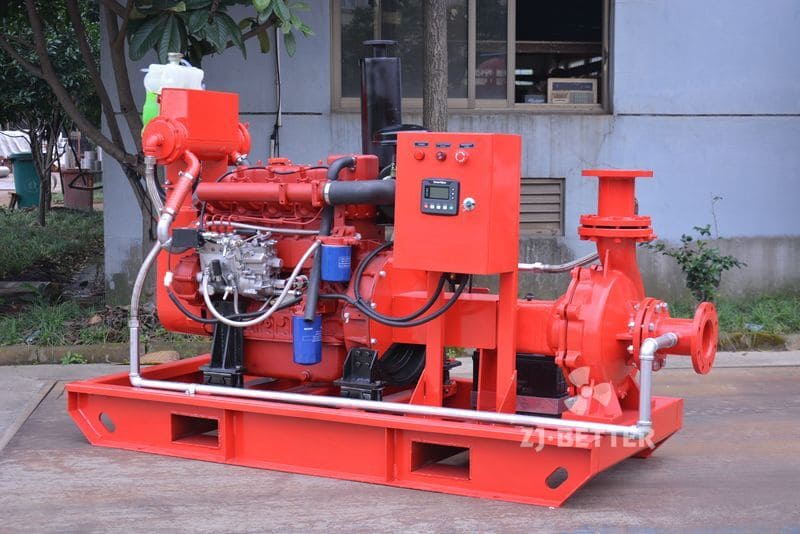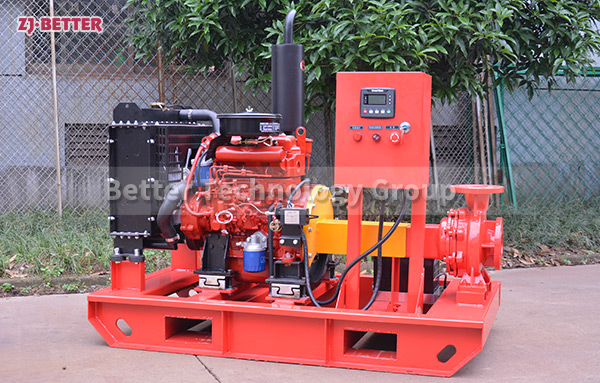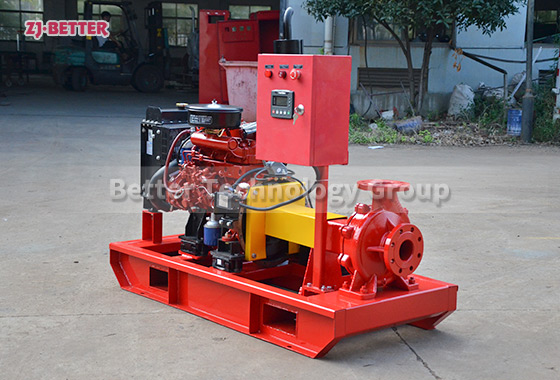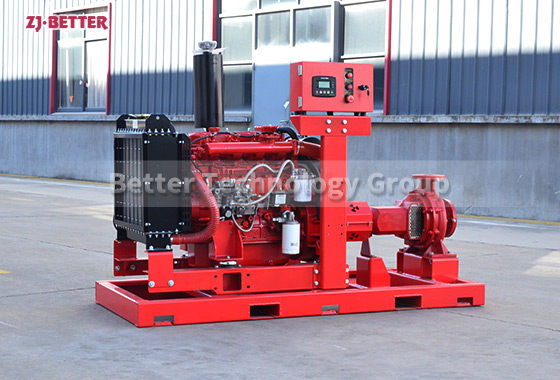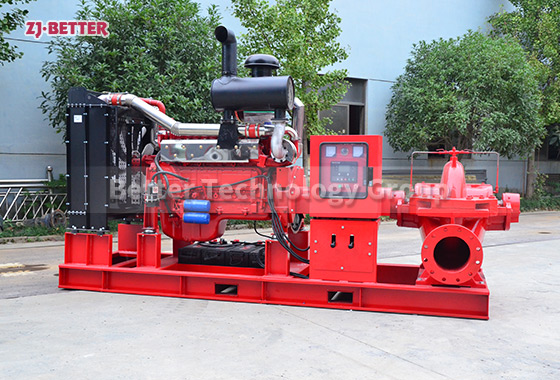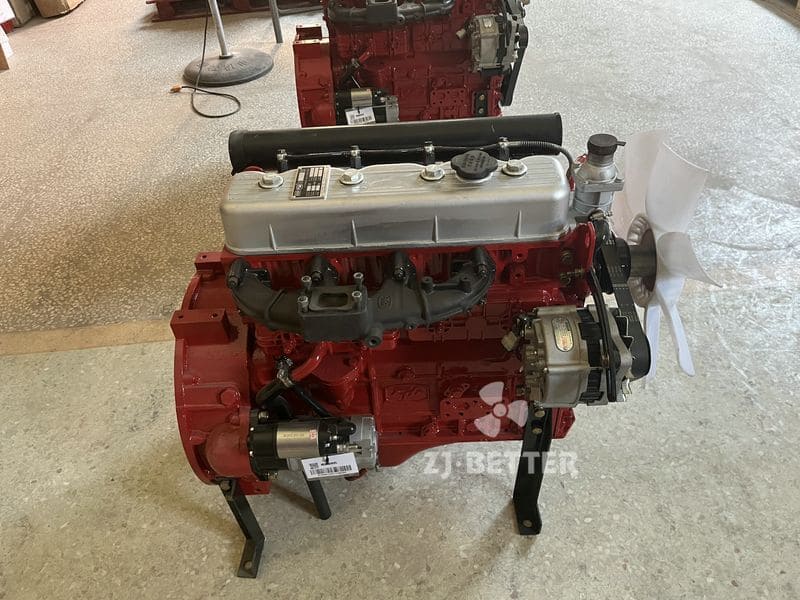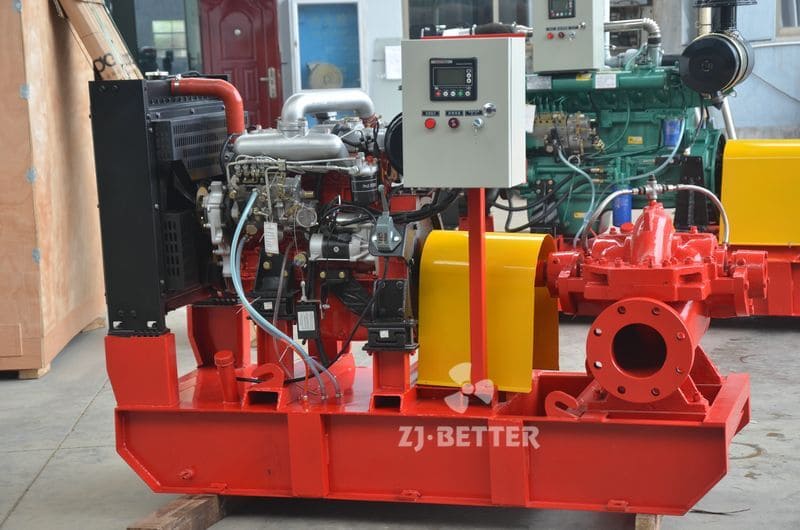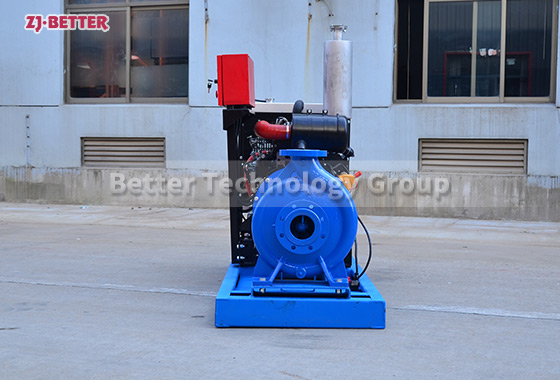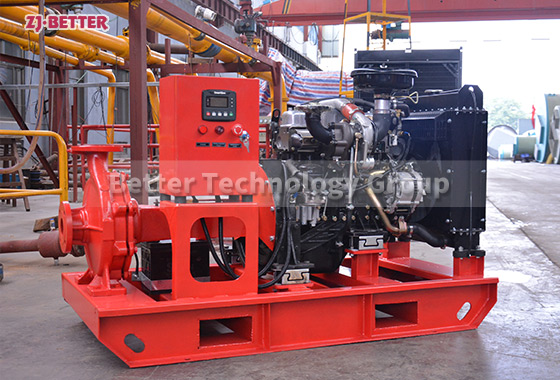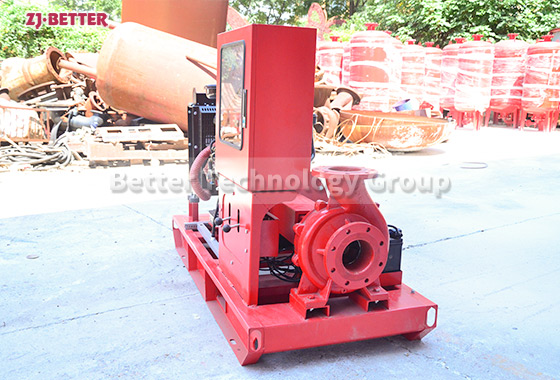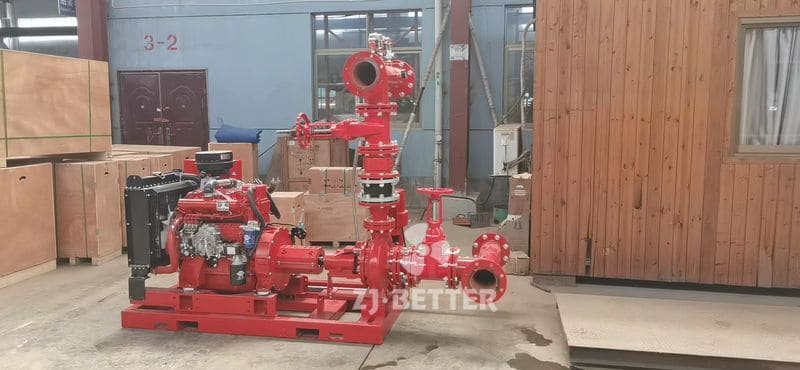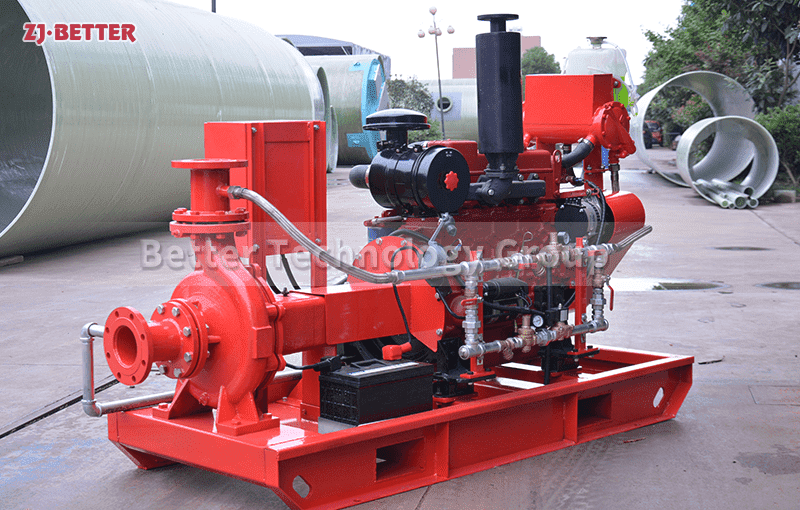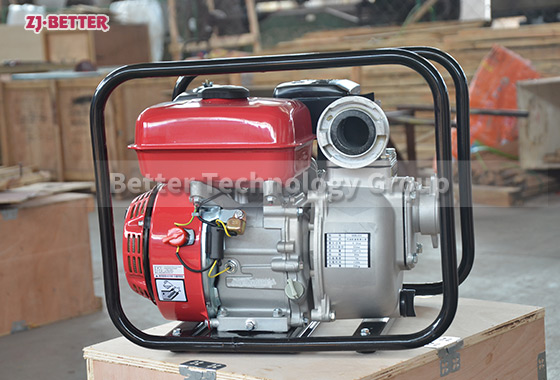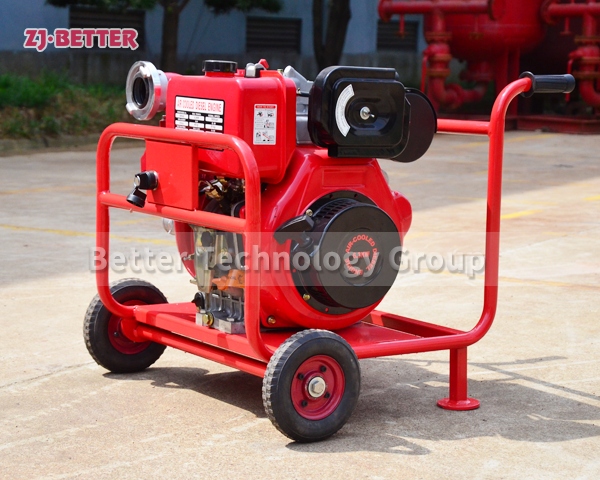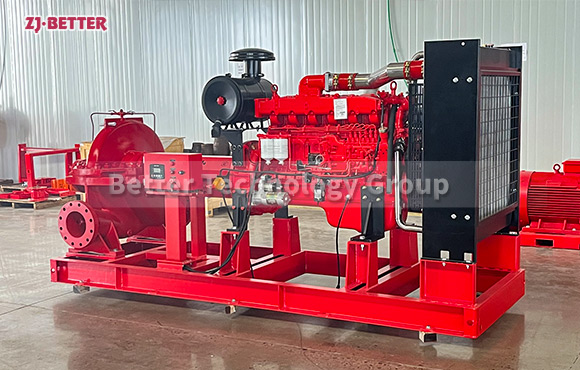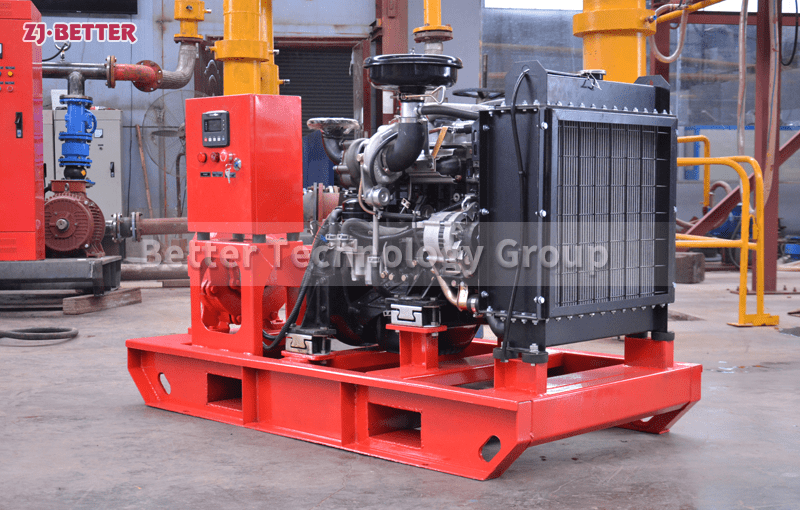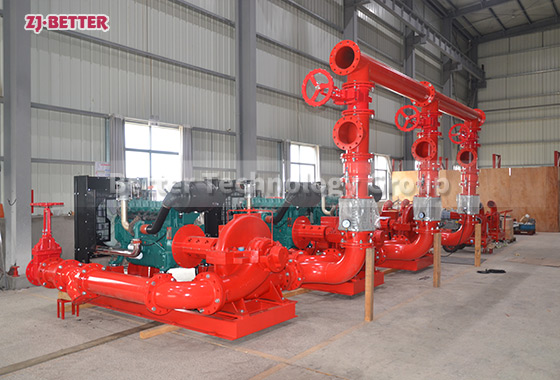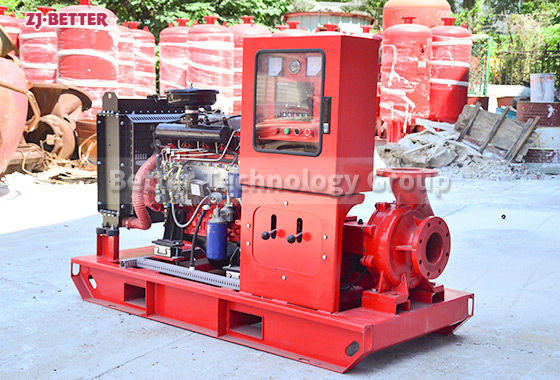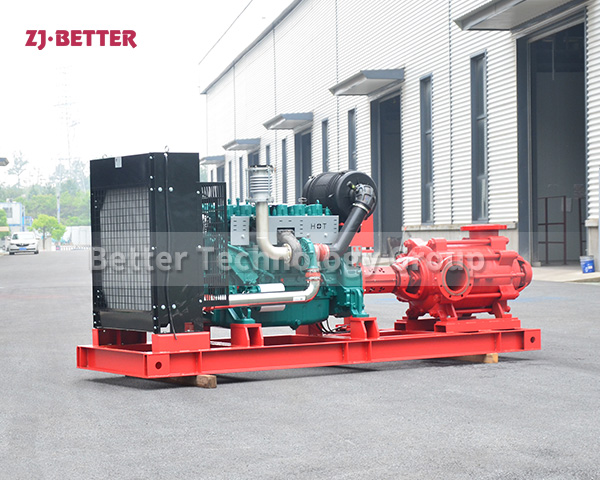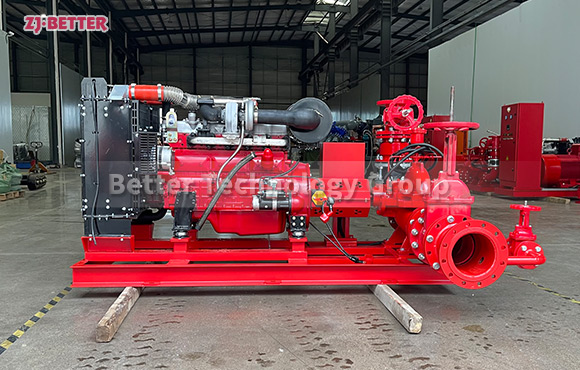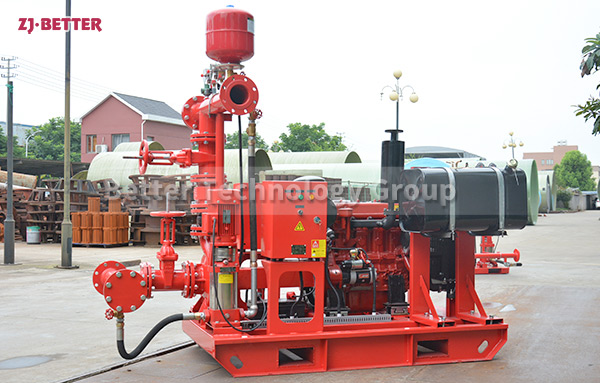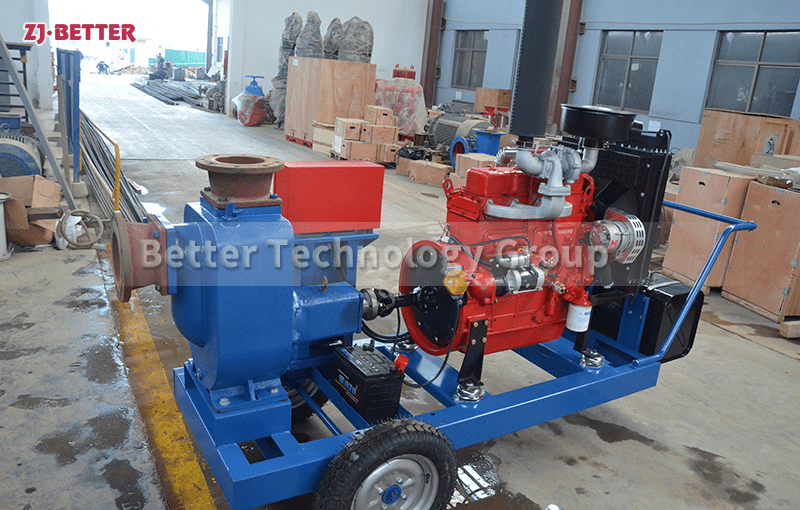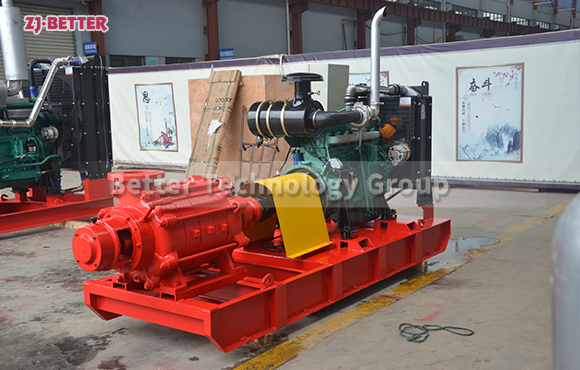What are the components of a diesel engine fire pump?
XBC series fully automatic diesel engine fire pump set has been widely used as a fixed fire extinguishing equipment for fire diversion, especially for fire water supply under unexpected circumstances such as no power supply or abnormal power supply (mains power). The fire pump equipped in the unit is a horizontal single-stage and multi-stage fire-fighting special pump. It is mainly composed of diesel engine, fire pump, connection device, fuel tank, radiator, battery pack, intelligent automatic control panel, etc.
Diesel engine-driven fire pumps are designed and manufactured in accordance with GB “Fire Pumps”. Comply with CCCF certification requirements. The advantage of its product is that when a fire occurs, the power supply fails, and the electric fire pump group cannot be put into use normally, the diesel engine fire pump group can be automatically put into operation to ensure the normal fire fighting. Compared with electric fire pumps, diesel engine fire pumps do not require long-term investment in power supply, saving mains power supply transformers and normal expenses. Diesel engine fire pumps are equipped with various automatic functions to meet customer requirements, ensure long-term normal standby status of the equipment, and put it into fire fighting work at any time. The diesel engine fire pump set is also suitable for various emergency backup pump occasions.

